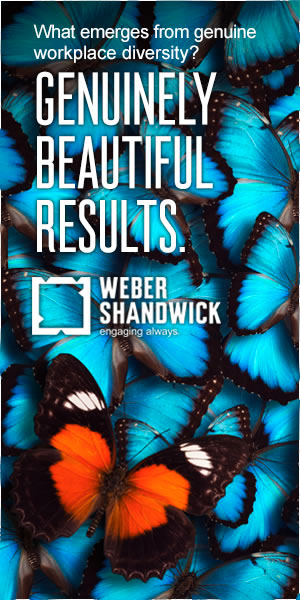Historically, tech companies haven’t always been known for their inclusiveness or diversity. At Spredfast Summit 2016, we decided to address the issue head-on with the inspiring breakout session, “Working While Human: Building Winning, Inclusive Teams.” Session attendees heard from Sally Kohn, a CNN political commentator and columnist, as she moderated a conversation between Ada-Renee Johnson, Google’s Channel’s Specialist Lead, and Shiloh Gulickson, the Huffington Post’s Business Development Manager. Attendees listened as these seasoned diversity inclusion experts offered concrete solutions for people looking to expand and improve their own inclusion efforts. We have all the highlights—and takeaways for all marketing teams—below.
Diversity Strengthens Companies
“Every study proves diverse teams bring greater success,” said Gulickson. “As much as I wish we always did things because it’s the right thing to do,” she continued, “that’s not how it always works. But the bottom line is important.”
Companies that make diversity a priority not only end up with more successful teams, they’re able to hit the right notes publically, too, particularly on social media. “Social is only as strong as the person typing the words,” said Johnson, adding that empowering employees to understand the impact of their words as well as the company’s voice allows them to push “true, fair, concise messages out.”
Social is only as strong as the person typing the words.
Marketers understand that consumers are increasingly looking for brands with true identities–brands that take stands on important issues and that don’t shy away from controversial topics. So it’s important for companies to know who brands are–as well what they value–at their core. And hewing close to a brand identity with real values brings success: We learned on day two of Summit that when, for example, Ben & Jerry’s spoke up on social about their support for the Black Lives Matter movement, they saw incredible engagement numbers.
Making Diversity a Reality
Diversity is a sensitive topic, and it takes time to build truly diverse teams–time that not everyone is willing to carve out, explained Gulickson, which is why it’s so important to have company executives on board. “Diversity inclusion efforts are often outside the regular day-to-day,” she said. “It wasn’t part of my day-to-day either, but I made it one, and that made it easier to make a case for it. At every event I pushed for diversity.”
Johnson also emphasized the need for accountability from the highest company levels. “Diversity inclusion can’t be solely on HR, the business end needs to demand it too,” she said. Johnson outlined an effective formula for making diversity a company reality: she said that when senior leadership stands in front of the entire company and explains that diversity is important to them and so it will be important to the organization as a whole, diversity efforts can succeed. Leadership needs to detail exactly how each person in particular will plug into the overall company-wide goal of making inclusion a reality. “Then that person can be held accountable,” explained Johnson. “You have to speak at senior leadership’s level, bottom line,” Johnson added.
When Google shared their diversity statistics publicly, “they weren’t pretty,” said Johnson, who added that the benefit of publicizing numbers is that not just employees hold the company accountable for improving; everyone does, making change a priority. “It doesn’t happen overnight, but programs need to be created within the company and community, starting early.”
While an initial negative reveal (like Google admitting their diversity numbers were lamentable) might be tough for marketers, demonstrating continued company improvement and commitment to diversity is marketing gold.
Diversity is a Beginning, not an End
Once all the proper HR boxes are checked, companies often think their work is done. But “diversity is a continuous conversation, not an end,” said Johnson. Gulickson emphasized the need to treat diversity inclusion just like any other company program in which measurement is important: set goals, and make sure you meet them, she said. She also noted that it can be hard to set goals in this sphere, so it’s important to be realistic and set achievable goals. Both speakers emphasized the need for continuous building: once you meet a goal, don’t stop—continue to sustain each goal and build upon it. “The thread will thicken and weave in and out of the company, making it stronger,” said Johnson.
Diverse teams need an internal community of support, but if none exists, “build your own,” said Gulickson. When she was at Twitter, she helped build the Super Women at Twitter (SWAT) group to bolster women within the company through support and regular events. When it comes to diversity inclusion events, action is important. To address the lack of support for women in tech, Gulickson spoke of organizing companies across Silicon Valley to hold events for women at which attendees focused on concrete skills like honing a killer elevator pitch or fixing their LinkedIn profiles.
When it comes to diversity inclusion events, action is important.
“Know the ultimate goal of your events and do post-event surveys to find out why people did or did not attend,” said Johnson. She also emphasized asking for help from survey respondents who can reach back to their team and increase support for future events.
We’ll leave you with one of our favorite moments from the session: An attendee asked the panel how, as a manager, she could tactfully ask HR to bring her more diverse candidates. “You can say ‘Bring me more diverse candidates,’” said Johnson. “There shouldn’t be any pushback.”
For even more Summit 2016 content goodness check out our recaps of day one and day two.

